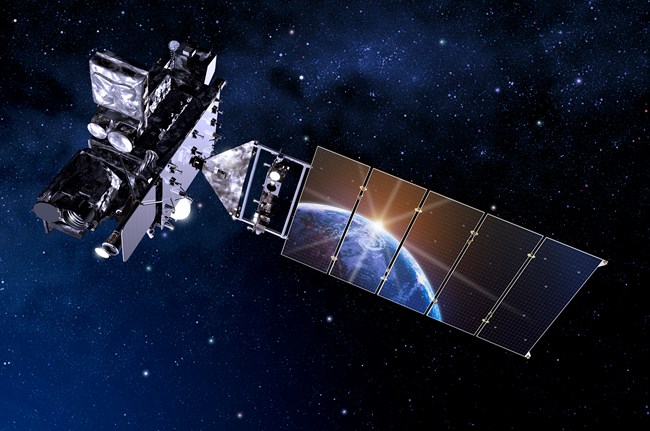
NASA
Remote sensing of vegetation condition and snow extent provides information essential to understanding and managing change at broad scales by describing important aspects of ecological and hydrological processes that have cascading effects on other natural resources. Spatial patterns of satellite-derived NDVI (Normalized Difference Vegetation Index), or "greenness," and vegetation are indicative of long-term climate conditions to which vegetation on the Colorado Plateau has adapted. NDVI also responds to short-term changes in weather and cycles annually with seasons. Changes in precipitation and temperature may cause changes in the spatial distribution of vegetation over time, and changes in NDVI may imply a response to changing climate or changing land condition brought about by human activities or natural disturbance.
Land-condition monitoring uses MODIS (MODerate Resolution Imaging Spectroradiometer) satellite imagery to measure vegetation greenness and snow-cover extent. NDVI change is related to productivity, based on information derived from the Terra satellite, which images the entire surface of Earth every day at 250-m resolution. NDVI is used to estimate the start and end of the growing season, the time of peak production, and seasonal productivity. Comparison of these attributes among years can indicate substantive changes in the extent of vegetation conditions, changes in the duration of the growing season, impacts due to drought, or large-scale natural or human-caused disturbances. In grassland systems, the shape of the NDVI curve can also indicate the relative extent of exotics (e.g., cheatgrass), because their phenology (timing of significant growth stages) tends to differ from that of native vegetation.
The Northern Colorado Plateau Network (NCPN) and U.S. Geological Survey have developed remote-sensing methods to improve understanding of how broad-scale vegetation condition responds to short-term weather patterns, long-term climate trends, land use, and geographic position. The objective of this protocol is to determine status and trends in snow cover, vegetation condition, and phenology for NCPN parks and adjacent lands. Additionally, the network will explore the reasons behind anomalous departures from previous NDVI trends with information from other vital signs monitoring.
Land surface phenology is monitored in all Northern Colorado Plateau Network parks.
Vital Signs: Vegetation phenology, phenology and climate correlates, extent and duration of snow cover
Protocol Lead: Dusty Perkins
Quick Reads
Source: NPS DataStore Saved Search 474. To search for additional information, visit the NPS DataStore.
Source: NPS DataStore Saved Search 450. To search for additional information, visit the NPS DataStore.
Source: NPS DataStore Collection 3863. To search for additional information, visit the NPS DataStore.
Last updated: June 16, 2025
